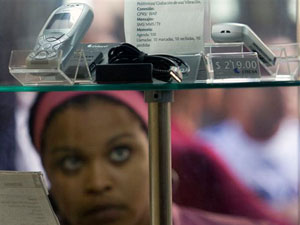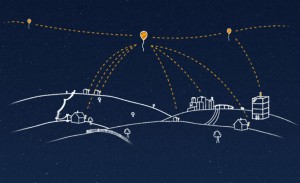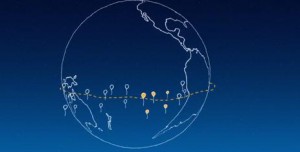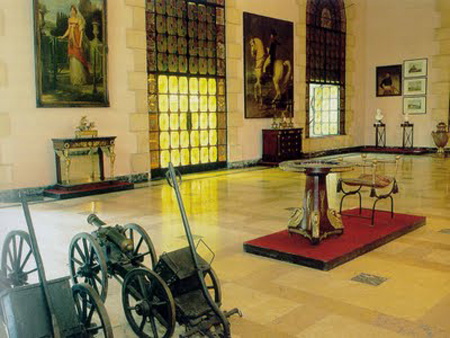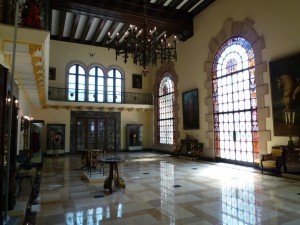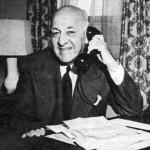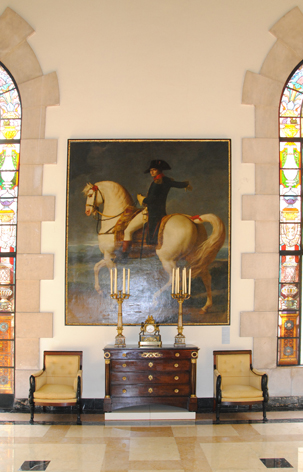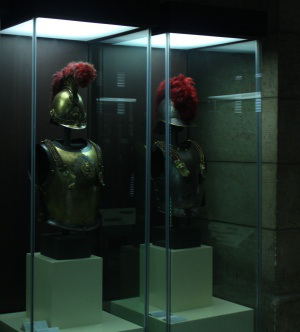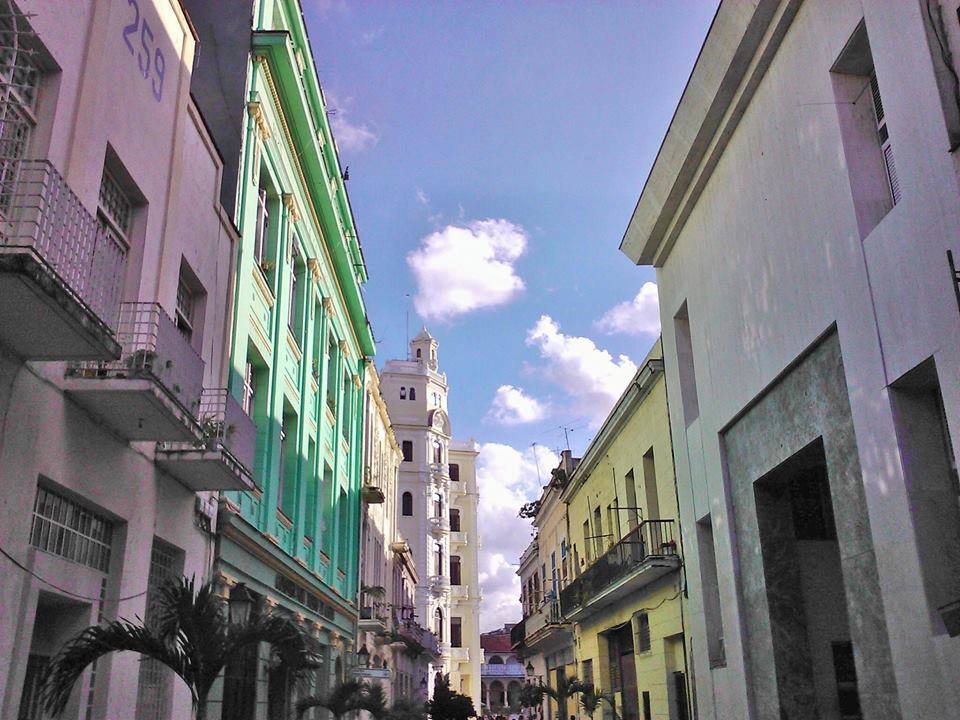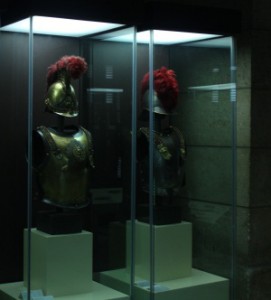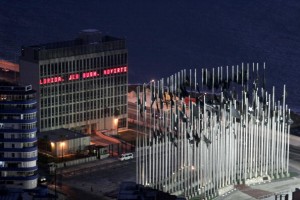EL DERECHO DE LOS CUBANOS AL INTERNET.
La visita de los ejecutivos de Google y la petición a instituciones cubanas en change.org de Internet para todos a un precio asequible, han desatado un intercambio intenso en la blogósfera nacional.
La visita de los ejecutivos de Google y la petición a instituciones cubanas en change.org de Internet para todos a un precio asequible, han desatado un intercambio intenso en la blogósfera nacional. Y como el micromundo refleja el macromundo, estas opiniones encontradas permiten tener una idea, en primer lugar, de la posición de los blogueros respecto a la noticia y a la solicitud ya mencionadas, y por otro, permiten “aterrizar” (muy de moda el término) las posturas más allá de ambos temas.
En el debate abundan las suspicacias alrededor de la visita de los directivos de Google al más desconectado de los países del continente. No leí que se mencionara el proyecto de globos Loon para dotar al globo (terráqueo) de un acceso gratuito; que Cuba, al igual que muchas zonas en Asia y África, apenas cuente con una infraestructura de conexión. Tampoco vi curiosidad por la falta de noticias sobre los trabajos de implementación del cable de fibra óptica llegado de Venezuela hace años. A muchos no parece llamarles la atención que luego del despliegue informativo inicial, no haya aparecido ninguna noticia que esclarezca cuál es el cronograma para dotar de la ansiada velocidad a las instituciones científicas y educativas en primer lugar, y paulatinamente al resto de la sociedad, según algún plan que contemple hasta el último kilómetro y que duerma archivado en alguna oficina del Ministerio de la Informática y las Comunicaciones.
Los suspicaces del mundo virtual, sin embargo, no se preguntan por el silencio alrededor de la visita en los medios informativos oficiales. Algunos afirman que dicho silencio responde a una solicitud de los visitantes; otros hasta minimizan la importancia de la visita, como si la presencia en Cuba de los más altos cargos de una de las empresas más grandes del mundo (si no en tamaño, en impacto) fuera cosa de rutina.
Resulta lamentable que profesionales de la informática y/o de la información no conozcan los proyectos para proveer Internet gratuito; y es de suponer que no los conocen pues no aparecen mencionados donde sí se detienen en enumerar los servicios del gigante de Internet a los que no puede accederse desde Cuba por el bloqueo.
Resulta lamentable que profesionales de la informática y/o de la información no conozcan los proyectos para proveer Internet gratuito.
La decisión de quedarse con la parte especulativa de la noticia, de no concederle buenas intenciones a un proyecto colosal que puede cambiar vidas (no me interesa que los de Google saquen réditos, el beneficio para los millones de desconectados será incalculable), esa decisión, decía, es libertad de opinión, aunque refleja un pensamiento paranoico que poco ha aprendido de la horizontalidad de los criterios en Internet.
Hermano de ese pensamiento es el que critica la iniciativa que puede encontrarse en change.org. Los críticos creen ver intenciones ocultas en el promotor, el uso de una plataforma “capitalista” para un reclamo doméstico en este país donde los optimistas del ahora sí abogan por más socialismo, la sintonía de la iniciativa con individuos (ciudadanos, y a mucha honra) con un pensamiento divergente, ergo manipulado y dirigido por aquellos que imponen el bloqueo y la amenaza imperialista.
Se ha llegado a hablar de los peligros que entraña dicha petición. Muy injusto viniendo de personas que evidentemente poseen una conexión a Internet estable y con una pálida idea de las ventajas que disfrutan sobre la mayoría; mayoría que, llegado el momento, tendrá que invertir tiempo y esfuerzo para familiarizarse con navegadores, sitios, correos, buscadores y el largo etcétera que permite optimizar la herramienta invaluable que es Internet, y que para no pocos, llegará tarde.
Qué puede haber de malo en que cualquiera promueva una iniciativa en change o avaaz. A muchos no les parece el lugar y el momento adecuados, pero no existen plataformas con dominios .cu para este tipo de peticiones. Un ciudadano con una buena idea se desgastaría tocando de puerta en puerta como un evangelizador, repartiendo volantes, hablando con desconocidos en el transporte público. ¿Se imaginan a ese ciudadano pidiendo una reunión en el centro de trabajo o estudio o en su lugar de residencia para lanzar su propuesta? Aparecerían los suspicaces del mundo real y nuestro ciudadano emprendedor tendría que dar un sinfín de explicaciones y demostrar que se le ocurrió a él solito. La reunión quedaría en espérate que esto es sin prisa y en pausa, que hay que consultar.
En este tema tan sensible y actual del derecho a Internet, no valen argumentos de guerra mediática. Busquen ejemplos. Hagan comparaciones. Saquen conclusiones.
14Ymedio/Regina Coyula, La Habana/InternetPhotos/theCubanhistory.com
EL DERECHO DE LOS CUBANOS AL INTERNET.
The Cuban History, Hollywood.
Arnoldo Varona, Editor.
Puesta del sol en Cuba. Cuba en Fotos.

THE CUBAN THE RIGHT TO HAVE INTERNET.
The visit of Google executives and the petition to Cuban institutions on change.org for all at an affordable price, have unleashed an intense exchange in the national blogosphere.
Visit Google executives and the petition on change.org Cuban institutions Internet for all at an affordable price, have unleashed an intense exchange in the national blogosphere. And as the micro reflects the macro, these reviews found to have an idea, first, of the position of the bloggers and news regarding the application mentioned above, and on the other, allow “land” (very fashionable term ) positions beyond both issues.
The discussion suspicions abound about visiting the Google executives more disconnected from the countries of the continent. I did not read that the draft was mentioned Loon balloons to give the globe (earth) of free access; that Cuba, like many areas in Asia and Africa, just tell an infrastructure connection. Nor vi curious lack of news on the work of implementing the fiber optic cable arrived from Venezuela for years. Many do not seem to get their attention that after the initial news coverage, has not appeared any news to clarify what is the timetable to provide the desired speed scientific and educational first institutions, and gradually the rest of society, as a plan that addresses the last mile and sleep filed in any office of the Ministry of Informatics and Communications.
Suspicious of the virtual world, however, wonder about the silence around the visit of official media. Some say that silence responds to a request from visitors; other to minimize the importance of the visit, as if the presence in Cuba of the highest offices of one of the largest companies in the world (if not in size, impact) were routine.
It is regrettable that computer professionals and / or information not known projects to provide free Internet; and presumably do not know where they are not mentioned on the listing itself stop services to the Internet giant that can not be accessed from Cuba by the blockade.
It is regrettable that computer professionals and / or information not known projects to provide free Internet
The decision to keep the speculative part of the news, good intentions not to grant a massive project that can change lives (I do not care that Google take out of revenues, profit for the millions of disconnected be incalculable), that decision said, is freedom of opinion, although it reflects a little paranoid thinking has learned from the horizontality of the criteria on the Internet.
Brother of that thought is criticizing the initiative can be found at change.org. Critics believe see hidden intentions in the promoter, the use of a “capitalist” platform for domestic demand in this country where optimists now I advocate more socialism, the tuning of the initiative with individuals (citizens, and proud) with divergent thinking, ergo manipulated and directed by those who impose the blockade and the imperialist threat.
It has come to talk about the dangers of such a request. Very unfair coming from people who obviously have a stable internet connection and a faint idea of the advantages enjoyed most about; majority, in due course, will have to invest time and effort to become familiar with browsers, sites, emails, search engines and so on which optimizes invaluable tool that is the Internet, and not a few, will be late.
What could be wrong with that either promotes or avaaz change initiative. Many do not you think the right place and time, but no platforms domains. Cu for such requests. A citizen with a good idea would wear going from door to door as an evangelist, handing out flyers, talking to strangers on public transport. Can you imagine that citizen asking for a meeting in the middle of work or study or their place of residence to kick your proposal? Appear suspicious of the real world and our enterprising citizen would have to give countless explanations and show that it occurred to him alone. The meeting would be to just wait this is slowly and pause, to be consulted.
In this sensitive topic right now Internet arguments are not worth media war. Find examples. Make comparisons. Draw conclusions.
14Ymedio/Regina Coyula, Havana / InternetPhotos / theCubanhistory.com
THE LAW OF THE CUBAN TO INTERNET.
The Cuban History, Hollywood.
Arnoldo Varona, Editor



